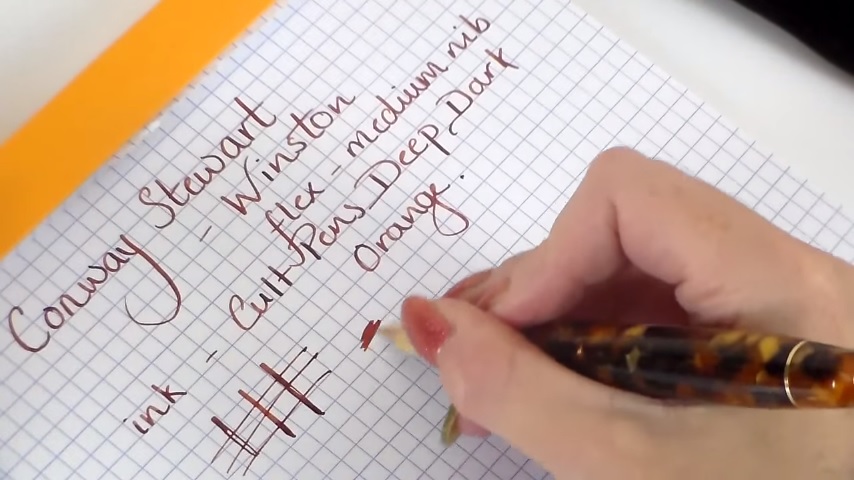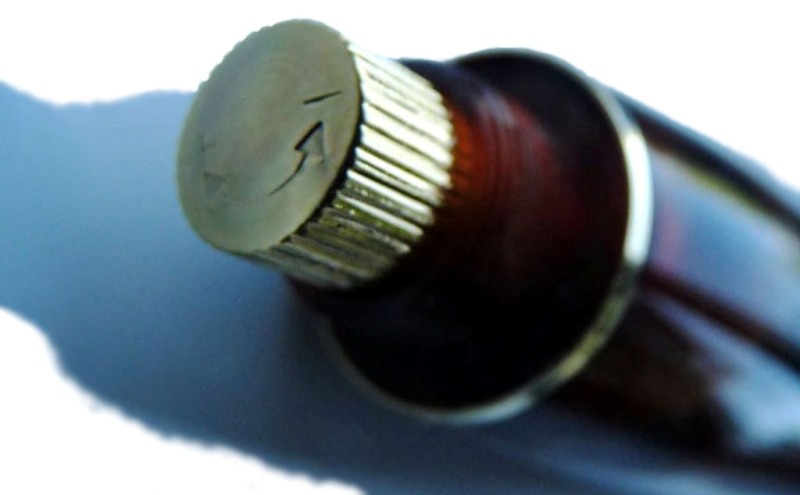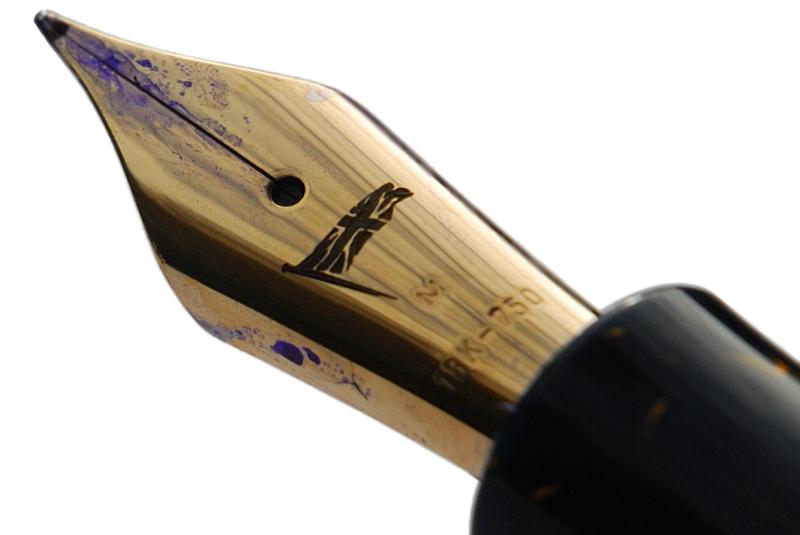A little bit of history Back in the early twentieth century, there were several great British fountain pen manufacturers, and although debate will rage ad infinitum about who was the greatest, Conway Stewart is usually in most people’s top five or so brands from the period. Like so many famous names of the era, it died a death at least in part due to the ghastly machinations of László Bíró, only to be reborn earlier this century. The reanimated Conway Stewart, based in Devon, could no longer claim to make the ‘all-British pen’ (the nibs were made on the continent), but they certainly turned out a decent range of very attractive writing equipment – ironically including some bodies adapted for the dreaded alternative to a proper pen, but we’ll have to overlook that. The new CS pens were made of a fine range of materials, and this caught the attention of many a fan, but may also have been part of its undoing; lacking an affordable end to its range it was always a high-margin but low-volume business, depending heavily upon exports, and it only took a fluctuation in currency exchange rates for feast to turn to famine. When the reborn brand was wound up last year, a number of enterprising firms bought up machinery, rod stock, and parts for partially-assembled pens, and one of these operators, Bespoke British Pens, has been trickling out a modest but interesting line of cannibalised Conways for the last few months. We couldn’t resist trying one out.

How it looks Big, shiny, solid and posh. Those resins are hard to capture in the camera, but they do reflect the light nicely and that Conway Stewart nib really sets it off to perfection. The only slight drawback may be the simplicity of the nib presentation, which some of our reviewers felt was a little under-ornamented. The union jack etched onto the nib would have pleased Winston, of course, although he may have raised a wry smile to find that (being a Bock) it was made in Germany. Overall, it looks expensive – which it is, really, but we’ll come on to that later.

How it feels Again, big – and fairly hefty. Neither was a problem as far as any of our reviewers were concerned; indeed we all found it sat very comfortably in the hand and felt ready for a good long writing session. Some of these pens – but not all – still have Conway Stewart imprints and limited-edition numbers engraved into the barrel.

How it fills It’s a piston-filler. The piston in question is essentially a decent captive converter, so the ink capacity is perhaps not as great as that in one of the bigger TWSBIs, for instance, but it takes on enough ink to keep going for a fair while. The piston screw is hidden under a blind cap, which would be all too easy to lose – but it does keep the lines of the pen nicely rounded.

Crucially, how it writes… Not all the spare parts were available in the same quantities, so Bespoke British Pens soon found themselves running out of an essential component – nibs! They seem to have made a virtue out of a crisis here by getting in touch with the original nib suppliers and procuring a unit with longer tines, which makes for a civilised semi-flex performance. It’s not as noodle-soft as the likes of the Pilot FA nib, so it can be used for everyday writing but there’s a decent degree of line variation available when you want it, without requiring too much effort.
Pen! What is it good for? Now, flex isn’t everyone’s favourite thing, and even a rather civilised flex nib like this won’t be too everyone’s taste – indeed, some of our reviewers felt this was a nice pen to play with but really not their bag for keeps. But one of us thought that it deserved a new category: ‘everyday flex’. A serious, big pen with a nib which offers flex but behaves well enough to use for ordinary note-taking and writing is not so easy to find – even if, at this price, you probably won’t want to take it out and about with you often.

VFM This is a tougher question. At a ticket price of £450 there’s no getting away from it; this is a very expensive pen. We think the materials, the quality of workmanship and the relative scarcity of materials do justify a premium price, although probably more at the £350 level really. Whether you feel it’s worth such a lot of money is, as always, very much a personal matter; it could be good value if it’s your dream pen, but if it’s not all that then you could get two or three good pens for the same money. Of our test panel, two were happy to play with it and pass it on… and one of us smashed the piggy-bank and bought one!

If this isn’t quite your cup of tea, but almost… There’s no point splashing out this much if it isn’t absolutely right for you, of course. In truth, the Winston seems to be one of the most popular CS models amongst fountain pen aficionados, but the similarly large Churchill brings a flat-top cap to the collection, and there are several smaller models still available for those who find this a bit unwieldy – all the way down to the diminutive Dandy. If a big, expensive, British pen is on your bucket list but for some reason Conway Stewart doesn’t cut the mustard, Onoto and Yard-o-Led are also still out there – and we’ll get on to reviewing their competing offers in the months ahead if we can find a way to do it.

Our overall recommendation Think before you press the button, as ever. Unfortunately there are few opportunities to try this before purchase, so an honest calculation about your own needs and resources is the order of the day. If you like flex nibs and can sensibly afford one of these (preferably without triggering marital disharmony), go for it; this is quite a pen! If flex isn’t really your thing, or you have any doubts about whether you’ll get enough mileage out of this to justify the cost, be careful.

Where to get hold of one Other by-products made from salvaged CS components are also available, and if we get our hands on them we’ll review those too. But in the meantime, if you’re after this particular combination with the ‘flag’ flex nib, you’ll need to go directly to Bespoke British Pens.

This meta-review references:
- Scribble Monboddo’s hand-written review
- Ian Hedley’s text-and-photos review
- Ruth Hanson’s video review
Thanks to David at Bespoke British Pens for kindly lending us a splendid brown Winston for its little tour around Britain.
